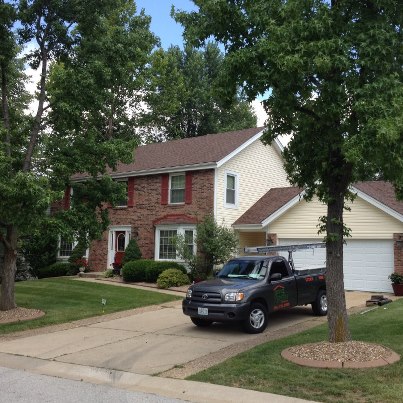Green & Energy
4 Fabulous Tips For Green Restoration

Restoring a home is a lot of work and can exhaust a lot of resources.
Undertaking a sustainable restoration project may not seem feasible initially, but with a little planning and some helpful tips, you can make your restoration a little greener without spending a fortune.

The key to doing this is to evaluate your space carefully, identify areas that are the most inefficient to restore first, and allow yourself to be creative.
If it’s a historic home you’re remodeling, employing some modern techniques will make the project much more sustainable and efficient.
Green Insulation
Ensuring efficient heating and cooling comes down to proper insulation. This may be one of the first places you start in a true restoration project.
Of course, in a sustainable restoration not just any insulation will do.
Reducing utility bills considerably and keeping things environmentally friendly in the process is the aim of green insulation.
There are a variety of materials to choose from but the effectiveness will depend, in large part, on the climate of the area.
From recycled newspaper cellulose to formaldehyde-free fiberglass and polyurethane foam spray, a properly installed insulation is the first step to a successful restoration.
Also, insulate doors and windows with weather stripping to block drafts.
Reuse and Repurpose
Salvaging building materials is one of the most productive, cost effective ways to restore your home.
Often people underestimate the potential of old materials like wood, brick, stone, slate, and glass.
Obviously the condition of the materials needs to be properly assessed, but many of these materials have a very long lifespan and can be effectively repurposed during the restoration.
For historic homes, reusing salvaged materials is sustainable and can preserve the character of the home.
Even if you aren’t able to salvage original materials from your home, you can often locate sellers of recycled materials and get a great price.
Green Paint
The paint doesn’t actually need to be green–just eco-friendly.
When painting, look for a no-voc paint. VOC stands for ‘volatile organic compound’ and is a primary contributor to indoor air contamination.
After selecting a safe paint, choose a color that suits the home and the environment.
Lighter, brighter colors and paint with higher light reflectance value will help reflect light better throughout the room.
This can help reduce energy use as light is better dispersed throughout a space. This can also give a room a warmer, more inviting feel.
If painting the exterior, considering the climate of the area can be a good way to maximize the paint color’s potential to save on energy.
For example, lighter colors reflect heat and can serve to keep your house cool in a warm climate.
Eco-Landscaping
Landscaping your yard can be more strategic than you might think.
Effectively utilizing plants and trees to insulate and keeping maintenance and water costs low is an important consideration in a restoration project.
Incorporating native plants into the landscaping plan is very sustainable. Also, plant trees in particular areas around your house for shade in the summer and heat in the winter.
Smaller leafy trees in the south and east will lose their leaves in winter and allow the sun to warm your house.
Larger trees in the north and west will protect from wind and provide welcome shade during the summer.
by Ben Vaughn
Ben Vaughn writes for El Dorado Restoration in El Dorado Count on home remodeling, green restoration tips, and the most cost effective ways to renovate your living spaces.
-

 Tech11 years ago
Tech11 years agoCreating An e-Commerce Website
-

 Tech11 years ago
Tech11 years agoDesign Template Guidelines For Mobile Apps
-

 Business6 years ago
Business6 years agoWhat Is AdsSupply? A Comprehensive Review
-

 Business10 years ago
Business10 years agoThe Key Types Of Brochure Printing Services
-

 Tech8 years ago
Tech8 years agoWhen To Send Your Bulk Messages?
-

 Tech5 years ago
Tech5 years ago5 Link Building Strategies You Can Apply For Local SEO
-

 Law5 years ago
Law5 years agoHow Can A Divorce Lawyer Help You Get Through Divorce?
-

 Home Improvement6 years ago
Home Improvement6 years agoHоw tо Kеер Antѕ Out оf Yоur Kitсhеn































